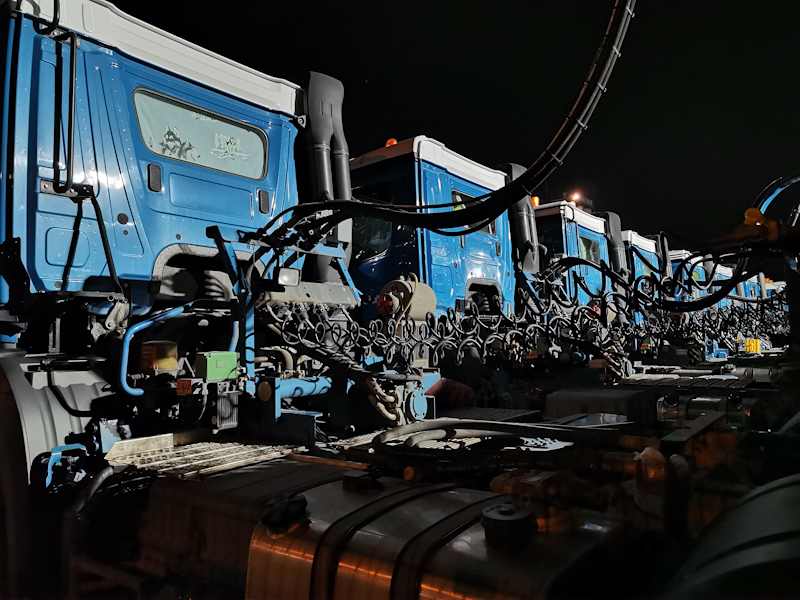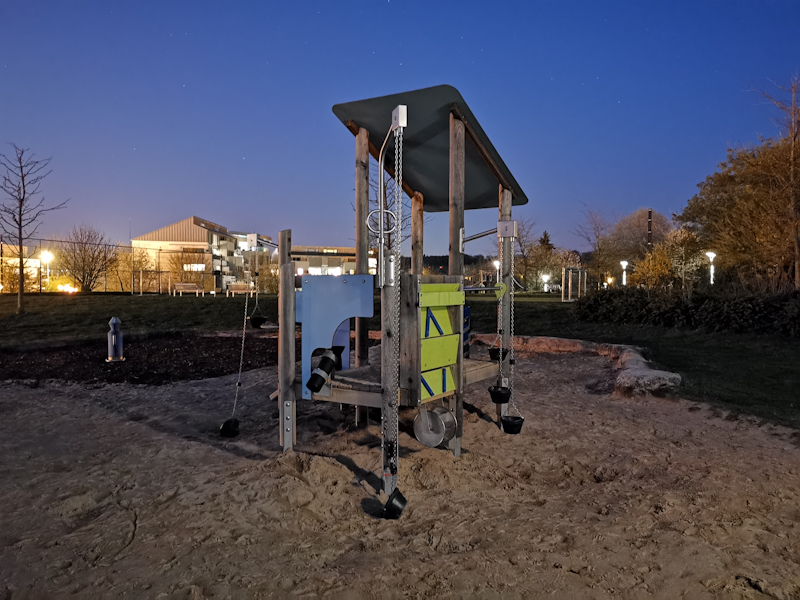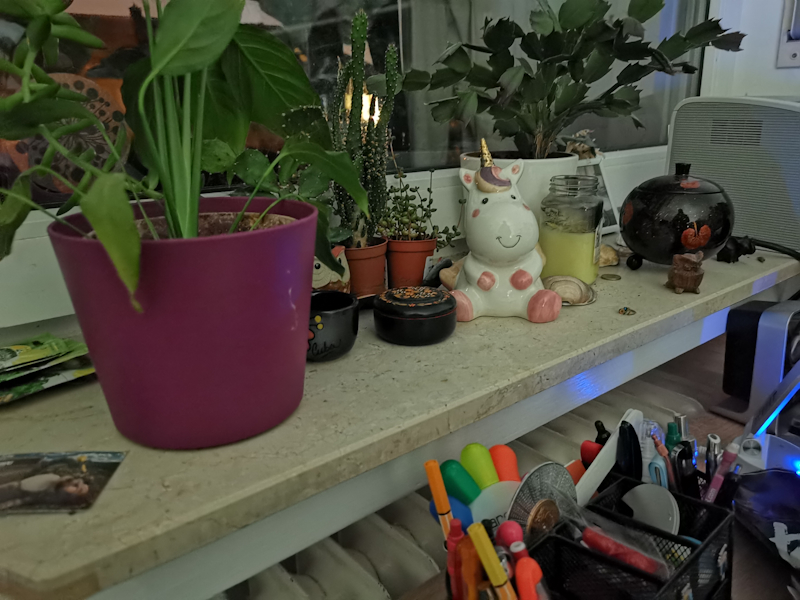The Huawei P30 & P30 Pro Reviews: Photography Enhanced
by Andrei Frumusanu on April 18, 2019 9:00 AM EST- Posted in
- Mobile
- Smartphones
- Huawei
- P30
- P30 Pro
Camera - Low Light Evaluation
Low-light photography is where Huawei’s strengths lie. Starting with the P20 the company was a pioneer in terms of computational photography, not only was the company able to improve low-light capture on smartphones with “regular” camera sensors, it also marked the start of customised camera sensor hardware that was able to achieve much higher ISO sensitivity than any other phone camera on the market.
Huawei’s rationale for adopting the RYYB sensor was in order to improve the low-light capabilities of the phone, promising 30% increased light capture. The P30 Pro in particular we’re expecting some massive low-light capture improvements, not only due to the new sensor but also thanks to the wider aperture as well as the integration of OIS in the sensor – something we haven’t seen in Huawei devices in several years.

[ P30 Pro ] - [ P30 ]
[ P20 Pro ] - [ P20 ] - [ Mate 20 Pro ]
[ S10+ (S) ] - [ S10+ (E) ] - [ S9+ (S) ]
[ G8 ] - [ G7 ] - [ V40 ]
[ View20 ] - [ OnePlus 6T ] - [ Pixel 3 ] - [ iPhone XS ]
As a note, shooting in 40MP mode in low light is pretty much a futile exercise, as the sensor just isn’t able to capture enough light without help of pixel binning down to 10MP.
Huawei had already a lead in low-light capture with its previous devices, and the only viable competition was the new Pixel’s Night Sight mode. With the P30s, Huawei now extends this lead. While not exactly reaching the level of detail on the Pixel 3’s Night Sight mode, the P30s both show very large improvements over their 40MP predecessors all while being leagues ahead of other traditional camera sensors.
It’s to be noted the Pixel 3’s Night mode was way off in terms of colour temperature, and the Huawei phones had a more correct representation of the orange illumination of sodium street lamps.
At certain brightness levels such as in this scene, Night mode on the Huawei phones can have a detrimental effect and results in blurred details, even though it produces a brighter image.
Both wide angle modules struggle in low-light, however Night mode can help out a lot. Again between the four wide angle shots between the P30 Pro and P30 we’re getting very different results, with the smaller P30 producing brighter results for some reason.

[ P30 Pro ] - [ P30 ]
[ P20 Pro ] - [ P20 ] - [ Mate 20 Pro ]
[ S10+ (S) ] - [ S10+ (E) ] - [ S9+ (S) ]
[ G8 ] - [ G7 ] - [ V40 ]
[ View20 ] - [ OnePlus 6T ] - [ Pixel 3 ] - [ iPhone XS ]
In this parking lot, again in regular shooting mode the P30s are ahead of the competition, with the only real contender being Google Night mode. Switching on the P30’s we see better exposure and shadows, although Google continues to retain a detail lead.
On the wide-angle camera, Huawei’s Night mode remains unchallenged. LG’s G8 comes near in terms of exposure, however it lacks details and is very noisy. Samsung’s new cameras are lagging far behind in this aspect.

[ P30 Pro ] - [ P30 ] - [ P20 Pro ] - [ P20 ]
[ Mate 20 Pro ] - [ S10+ (S) ] - [ S10+ (E) ] - [ S9+ (S) ]
[ G8 ] - [ G7 ] - [ V40 ] - [ View20 ]
[ OnePlus 6T ] - [ Pixel 3 ] - [ iPhone XS ]
This shot is quite challenging due to the high dynamic range between the illuminated truck cabins and the dark lower parts of the image. In the default mode, both P30s produced too dark images with not sufficient dynamic range, however on the P30 Pro the phone captures an evident HDR processed picture. I didn’t do anything special between takes, and this is something I’ve experienced in the past with Huawei devices. Unfortunately the phone has like a dozen capture modes which get triggered depending by scene, and one has little control over it and the result can only be determined by the resulting EXIF information in the image.
When in Night mode, the P30’s produce better shadows than the Pixel, however the latter continues to have an advantage in terms of detail. The Pixel is also a tad too saturated with the blue of the trucks, while the Huawei phones are too undersaturated.
Camera - Extreme Low-Light Evaluation
Moving on to extreme low-light conditions, these are scenarios we traditionally didn’t expect smartphones cameras to be effective at all. Most phones here will produce a dark image and are at their limit in terms of light capture. To be able to perform here, you need help of specialised sensors or sneaky computational photography.

[ P30 Pro ] - [ P30 ] - [ P20 Pro ] - [ P20 ]
[ Mate 20 Pro ] - [ S10+ (S) ] - [ S10+ (E) ] - [ S9+ (S) ]
[ G8 ] - [ G7 ] - [ V40 ] - [ View20 ]
[ OnePlus 6T ] - [ Pixel 3 ] - [ iPhone XS ]
In our playground shot in the night, the P30 Pro pulls in some incredible amount of light. The auto shot comes in at ISO25600, however due to the noise reduction you’re hard to notice any noise at all.
The smaller P30 had issues in terms of focusing correctly, and thus it resulted in a blurry shot.
Switching on Night mode, the P30 Pro is able to capture some outstanding results far ahead of any other device. The inclusion of OIS on the P30 Pro really augments the Night mode, and while in past devices we saw more blurred details in this mode, on the P30 Pro things actually get a lot sharper.
The Pixel 3’s Night mode can’t keep up here as even if it’s algorithmically superior, the sensor just isn’t able to capture enough input data.
Comparing the P30 Pro to say the iPhone XS really showcases the massive differences that we’re currently seeing in the competitive landscape, and the differences are absurd.

[ P30 Pro ] - [ P30 ] - [ P20 Pro ] - [ P20 ]
[ Mate 20 Pro ] - [ S10+ (S) ] - [ S10+ (E) ] - [ S9+ (S) ]
[ G8 ] - [ G7 ] - [ V40 ] - [ View20 ]
[ OnePlus 6T ] - [ Pixel 3 ] - [ iPhone XS ]
In this last in-door shot, the absurdity continues as the P30s are just in a different league. Again between the P30 Pro and the P30 we see the former take advantage of OIS and a resulting sharper picture.
Both phones in the auto mode area already ahead of the pack in terms of capture ability, but turning on the Night mode further widens the gap, achieving even more detail. I was actually aghast to see how natural the resulting image was, yet the actual room was much darker than what’s represented here.
P30 Pro & P30 Low-Light Evaluation Conclusion
Overall, Huawei here hit it out of the park in terms of low-light capture. The new sensors as well as the new optics on the P30 Pro really put the devices far ahead of the curve in terms of what they’re able to produce.
OIS for the P30 Pro in particular has notable benefits, especially when paired together with the Night mode. Huawei’s processing for Night mode is a lot brighter than previous devices. Google still seems to have the better algorithms and resulting Night Sight pictures can be a lot sharper and more detailed than Huawei’s Night mode, however under a certain threshold of low light even the Pixel 3 can’t keep up with Huawei’s new camera modules.
The P30 Pro is the best low-light camera smartphone on the market, with the P30 closely following behind. The competition really needs to scramble to improve their computational photography abilities, and be at least be able to match Google’s implementation. If we’ll see other vendors employ special sensors such as employed by Huawei is to be seen, but for now the company’s cameras are in a class of their own in low-light.










85 Comments
View All Comments
Andrei Frumusanu - Thursday, April 18, 2019 - link
The sensor should be in 4:1 binning mode, otherwise the dynamic range would be much worse.No 10-bit HDR or HDR recording.
4K30: 40Mbps AVC High@5.1 // 25Mbps HEVC High@L5
FHD60: 25Mbps AVC High@4.2 // 16Mbps HEVC Main@4.1
The bit-rates are quite low.
eastcoast_pete - Thursday, April 18, 2019 - link
Thanks Andrei! The low bit rates are unfortunate, and likely hurt the quality of the video. If you still have the P30 Pro, could you try the Android app "Open Camera" and see if that allows for higher bit rate recording?In general, I don't get why so many phone manufacturers are hamstringing even their flagships like that. At least give users the option of recording at higher bit rate. These days, even many affordable mainstream microSD cards support write speeds of 60 Mb/s and up.
Andrei Frumusanu - Friday, April 19, 2019 - link
In Open Camera:AVC tops out at 25Mbps at 4K30 for some reason.
HEVC can be set to 80Mbps in the settings and results in a 62Mbps file at 4K30.
eastcoast_pete - Friday, April 19, 2019 - link
Thanks Andrei! Appreciate it! Any comments on how the 80 Mbps video looked like?I suggested to try this to a. learn what the phone hardware can support and b. hopefully motivate/shame Huawei (and others) with your results to improve their camera software. If Open Camera can go up to 80 Mbps in 4K HEVC recording, the phone is clearly capable of higher bitrates than Huawei uses. As someone interested in digital video, I always want to acquire at the highest bit rate possible, and then compress afterwards (thank you, Handbrake team!). Throwing out data is easy, re-creating details is hard or impossible. Also, higher bit rates generally reduce compression artifacts.
s.yu - Friday, April 19, 2019 - link
Hey Andrei, I've been looking at the 40MP shots of the P20P, 30P, and Mate20P, and a very peculiar thing I noticed is that both the P20P and 30P have false color interpolation artifacts, while the Mate20P avoids that; but in terms of chroma noise, Mate20P and P30P are on the same level, while in terms of texture aggregation, the P20P and Mate20P behave similarly.So the suppression of the interpolation artifacts doesn't seem to be due to chroma NR, nor is it in any way correlated to sharpening, *nor is it CFA-bound*, as the P20P shares a CFA with Mate20P while P30P uses RYYB. So do you have any idea why this might be?
I've been examining the area below the left half of the bridge for chroma noise and the pale-looking tree there exhibits a lot of interpolation artifacts in the P20P/30P shots:
https://images.anandtech.com/galleries/7027/P30Pro...
https://images.anandtech.com/galleries/7027/Mate20...
https://images.anandtech.com/galleries/7027/P20Pro...
Andrei Frumusanu - Friday, April 19, 2019 - link
I think all of it is just results of the lens; if you check the centre of other images they all look fine, but it gets worse and worse off-centre for the P20P and P30P.s.yu - Friday, April 19, 2019 - link
Hmmm, I couldn't think of an optical artifact with that kind of behavior...I don't think CA would be especially evident on foliage especially when the lighting of the scene renders it very low contrast. Basically in that really typical scene you're seeing blobs of other colors (which are not actually present) in a cloud of yellowish green.I chose another set and this time there's orange artifacts in the green bush in the center of the scene possibly with magenta artifacts in white or very faintly pink flowers slightly above it(the generally uniform color of the petals seem artificially "split" by the P30P between magenta and white, but I'm not really sure), again neither are visible on bayer or Mate20P.
https://images.anandtech.com/galleries/7025/P30Pro...
https://images.anandtech.com/galleries/7025/Mate20...
https://images.anandtech.com/galleries/7025/Pixel3...
It isn't so obvious in the P20P shot, but the severe texture aggregation rendered it impossible to tell. Usually for these artifacts to show, the pattern's frequency has to be high enough.
Andrei Frumusanu - Friday, April 19, 2019 - link
It's hard to separate sensor effects from post-processing effects. Another thing to take into account is that the P30P sends RYYB data directly to the ISP where things get recomputed. It can be either a DTI issues on the sensor, an ISP recombination issue, or simply a senseless noise reduction filter.neothe0ne - Thursday, April 18, 2019 - link
It looks like the speaker evaluation is missing from the review?Andrei Frumusanu - Thursday, April 18, 2019 - link
I'll be re-adding that soon / tomorrow, I wanted to add a part regarding stereo separation.In general the speaker is good, however it's still a mono bottom firing speaker.